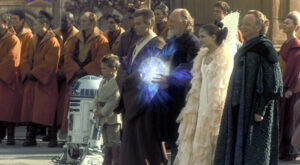The Best Years of Our Lives (1946)
4.7 out of 5
Genre: Drama
Movie Information:
William Wyler is a highly respected filmmaker known for meticulous directing and classic films like Ben-Hur (1959) and Funny Girl (1968).
Lead: Fredric March
Fredic March is an Academy Award winner for Dr. Jekyll and Mr. Hyde (1932)
Lead: Harold Russell
Harold Russell is a World War II veteran and not a professional actor until closer to the end of his life.
Lead: Dana Andrews
Dana Andrews is a Film Noir star in movies like Laura (1944)
The Movie's Business
Box Office Performance: Though exact figures are debated, “The Best Years of Our Lives” was a massive hit, becoming the second-highest grossing film behind “Gone With the Wind” at the time.
Synopsis
Three World War 2 (WW II) veterans, a banker (Fredric March), a sailor (Harold Russell), and a bombardier (Dana Andrews), return home to a changed America. Each man grapples with the physical and emotional scars of war as they attempt to reintegrate into their families and communities.
Fred struggles with a hand injury that hinders his career, Harold adjusts to life with prosthetic hooks, and Al wrestles with marital issues and feelings of purposelessness.

“The Best Years of Our Lives” paints a powerful portrait of the human cost of war and the challenges of coming home in this world war 2 film.
Required Viewing Movies: Review
Strengths
The performances are phenomenal. This is a classic war film in which Fredric March delivers a nuanced portrayal of a man struggling with pride and disability. Harold Russell, a real-life war veteran with prosthetic hooks, brings an authenticity to his role that resonates deeply. The film’s emotional core rests on the powerful chemistry between the three leads.
Director William Wyler masterfully crafts a poignant and suspenseful narrative. He doesn’t shy away from the harsh realities of war trauma, but also weaves in moments of hope and resilience. The film’s pacing, while deliberate, allows viewers to fully invest in the characters’ struggles.
Thematically, “The Best Years of Our Lives” remains profoundly relevant. The film explores the societal responsibility towards veterans and the challenges of reintegration after war. These themes resonate with audiences today, making the film a timeless classic.
Weaknesses
The film’s portrayal of women, particularly the wives, can feel somewhat stereotypical. Their anxieties and struggles take a back seat to the men’s experiences. However, this film was made in 1946 and times were much different then. While progressive for its time, the film’s gender dynamics might feel dated to modern viewers.
Clocking in at nearly three hours, “The Best Years of Our Lives” can feel long at times. However, the depth of character development and the emotional weight of the story justify the extended runtime for most viewers.
Director William Wyler masterfully crafts a poignant and suspenseful narrative. He doesn’t shy away from the harsh realities of war trauma, but also weaves in moments of hope and resilience. The film’s pacing, while deliberate, allows viewers to fully invest in the characters’ struggles.
Thematically, “The Best Years of Our Lives” remains profoundly relevant. The film explores the societal responsibility towards veterans and the challenges of reintegration after war. These themes resonate with audiences today, making the film a timeless classic.
Why The Best Years of Our Lives is Required Viewing
This groundbreaking film shattered Hollywood taboos by tackling the psychological effects of war.
The exceptional performances, powerful message, and timeless themes make “The Best Years of Our Lives” a must-see for anyone interested in war films, human resilience, and the complexities of homecoming.









